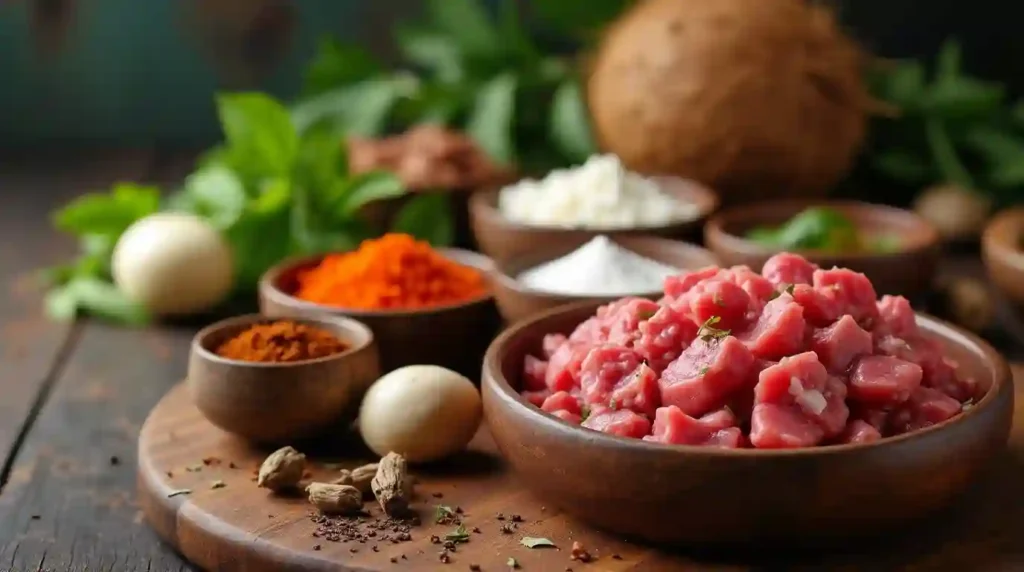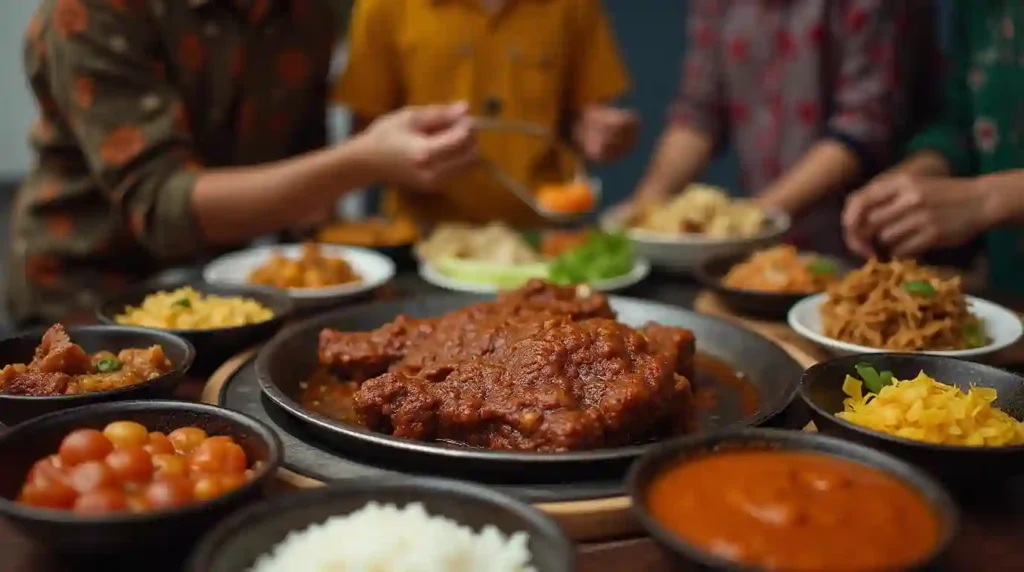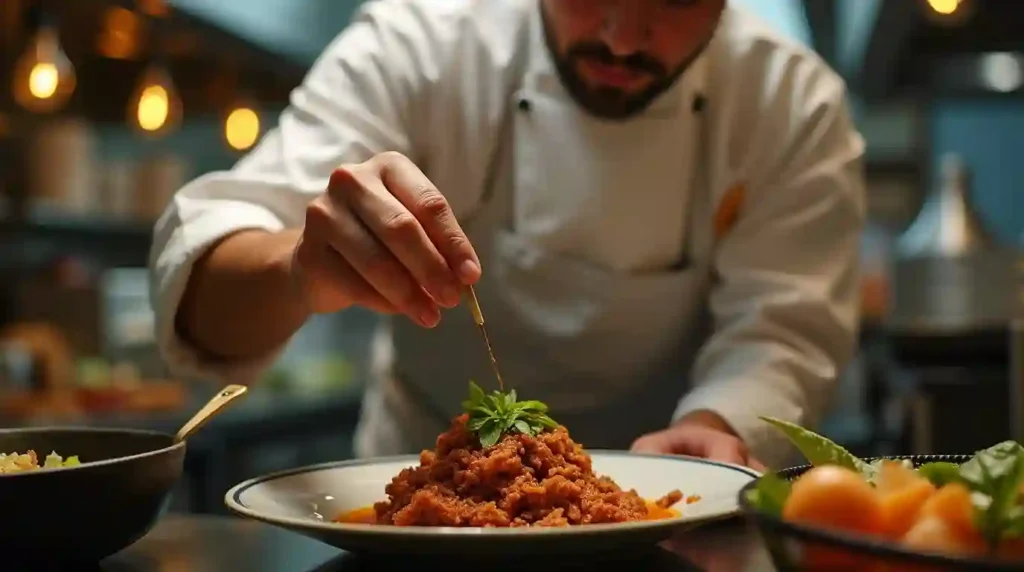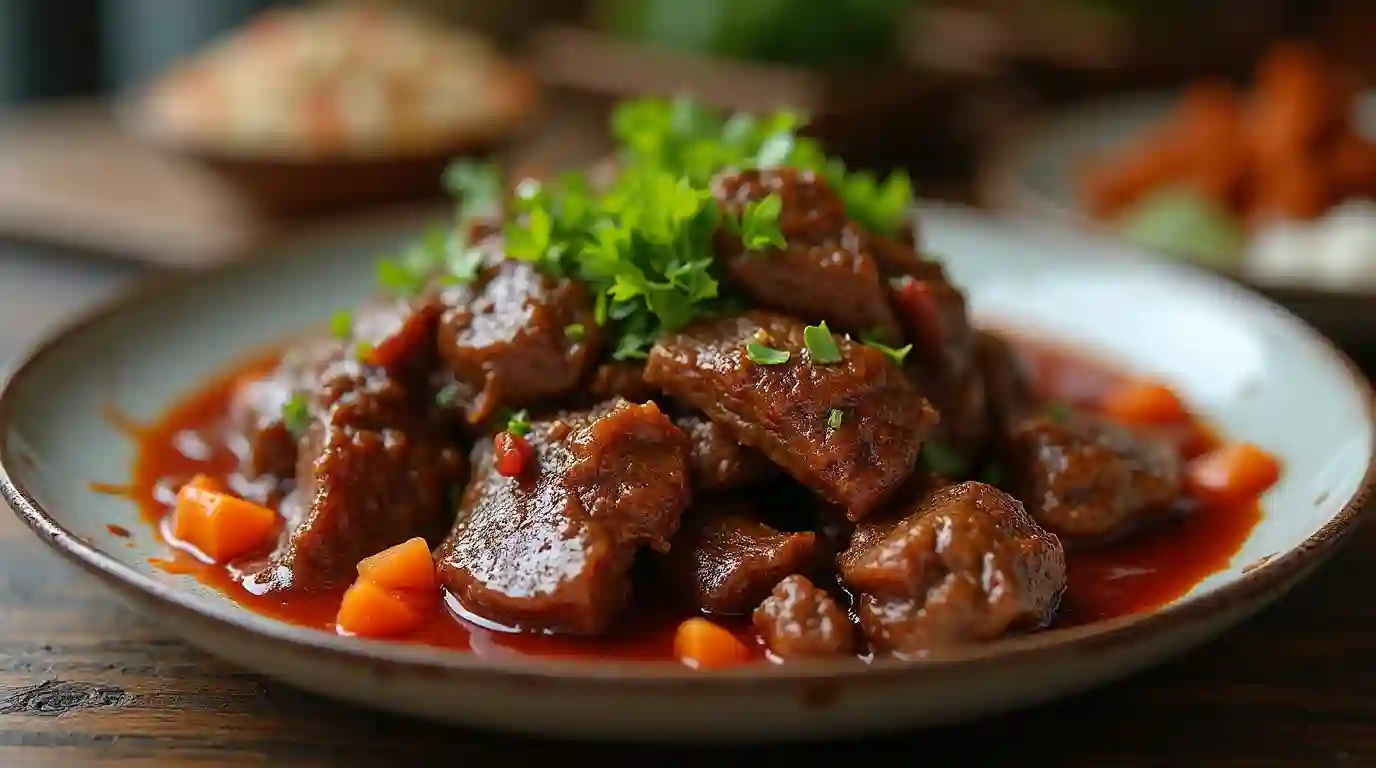Rendang is a culinary gem that captivates food lovers around the world. This rich, tender meat dish is packed with flavor and steeped in tradition, making it a staple across Indonesia and beyond. In this article, we’ll dive into the origins of rendang, explore its ingredients, and discover what sets it apart from curry. We’ll also answer some burning questions about this beloved dish. So, get ready to embark on a flavorful journey through the world of Indonesian beef stew!
Introduction to Rendang
What is it?
Rendang, a traditional Indonesian dish, is celebrated for its rich flavors and tender meat.
Origins
Originating from the Minangkabau ethnic group of West Sumatra, this dish is often served during special occasions, family gatherings, and ceremonies.
Preparation
The preparation involves slow-cooking beef or other proteins in a mixture of coconut milk, lemongrass, ginger, galangal, and an array of spices, allowing the flavors to meld beautifully.
Global Recognition
Known for its unique balance of savory, spicy, and slightly sweet notes, it has gained international recognition, delighting food enthusiasts around the world.Part 2: What Does Rendang Consist Of? (150 words)

What Does Rendang Consist Of?
Ingredients of Traditional Rendang
it is celebrated for its rich and complex flavors, which come from a variety of fresh ingredients. Typically, you’d find beef, coconut milk, lemongrass, garlic, ginger, turmeric, and a mix of spices like chili and coriander. The preparation of rendang involves slow-cooking these ingredients, allowing the flavors to meld beautifully. Here’s a quick look at the essential ingredients:
| Ingredient | Quantity |
|---|---|
| Beef (chuck or brisket) | 2 lbs (900 g) |
| Coconut milk | 2 cups (480 ml) |
| Lemongrass | 2 stalks |
| Garlic | 6 cloves |
| Ginger | 1-inch piece |
| Turmeric | 1 tsp |
| Chili powder | 2 tsp |
| Coriander | 1 tsp |
Variations of Rendang
While traditional rendang is most commonly made with beef, you’ll find variations using chicken, lamb, or even vegetables. Each variation offers a unique twist, showcasing local flavors and preferences. For instance, some regions add peanuts for extra texture, while others may incorporate local herbs.
For more interesting topics click on the following topics:
What Does Rendang Taste Like?
Flavor Profile
The flavor profile of Indonesian beef stew is simply mesmerizing. It delivers a delightful harmony of spicy, sweet, and savory notes. When you savor a bite, the warm spices hit first, followed by the smooth creaminess of coconut milk. The slow-cooked beef becomes tender and absorbs all those rich flavors, making every mouthful a joy.
How to Enjoy Rendang
There are many ways to enjoy rendang. Traditionally, it’s served with steamed rice, which balances its bold flavors. Some folks love pairing it with fried shallots or even using it in wraps, showcasing its tasty versatility. Whether at home or at a celebration, Indonesian beef stew always shines!
How to Cook Rendang

Step-by-Step Cooking Guide
Cooking rendang might seem daunting, but it’s quite simple! Begin by browning the beef in a large pot over medium heat. After that, add chopped garlic, ginger, and lemongrass, stirring until fragrant. Next, pour in the coconut milk and let it simmer. The key here is patience; slow-cooking helps develop those rich flavors.
Cooking Tips
As you cook, occasionally stir to prevent sticking. After about two hours, the sauce will thicken, and the beef should be tender. Remember, the longer you cook, the better the flavors meld. Don’t forget to taste and adjust the seasoning; balance is essential!
For those eager to explore more delightful recipes, check out our meat dishes that are sure to impress!
How to Serve Rendang

Serving Suggestions
When it comes to serving it, presentation matters. Traditionally, it is served with steamed rice, which complements the rich flavors perfectly. You might also add a side of vegetables, like sautéed greens or pickled cucumbers, to balance the meal.
Ideal Occasions
Furthermore, rendang is often featured at special celebrations and gatherings, making it a crowd-pleaser. To enhance the dining experience, consider serving it in a beautiful dish to showcase its vibrant colors. Whether for a casual meal or a festive occasion, Indonesian beef stew always brings warmth and joy to the table!
Health Benefits of Rendang
Nutritional Value
it is not just delicious; it also offers health benefits. First, the beef provides a great source of protein, which is essential for building and repairing muscles. Furthermore, the spices like turmeric and ginger add anti-inflammatory properties to the dish.
A Balanced Meal
When served with rice and vegetables, rendang creates a wholesome meal that’s satisfying and nutritious. The healthy fats from coconut milk assist in nutrient absorption. However, enjoy this rich dish in moderation. For more nutritious options, check out our healthy meat dishes for inspired choices!

Variations of Rendang
Different Types
Rendang comes in several delicious variations that showcase regional flavors. For instance, Rendang Padang is the most popular, known for its rich and tender beef cooked in coconut milk and spices. Another option, Rendang Ayam, features chicken instead of beef, delivering a lighter yet equally tasty experience.
Unique Twists
Moreover, some cooks experiment with different proteins, such as lamb or even plant-based ingredients like tempeh, creating unique takes on the classic dish. Regardless of the variation, each version of rendang offers its own delicious twist, ensuring there’s something for everyone to enjoy!
Conclusion
Final Thoughts on Rendang
In conclusion, Indonesian beef stew is more than just a dish; it’s a celebration of flavors and culture. From its rich history to its mouthwatering taste and various health benefits,it is a must-try. Whether you’re cooking it at home or enjoying it at a restaurant, it’s sure to impress anyone who has a taste for bold flavors.
So, why not gather your ingredients and start cooking it today? You’ll not only enjoy preparing this delightful meal but also share it with family and friends for a memorable dining experience. Happy cooking!




